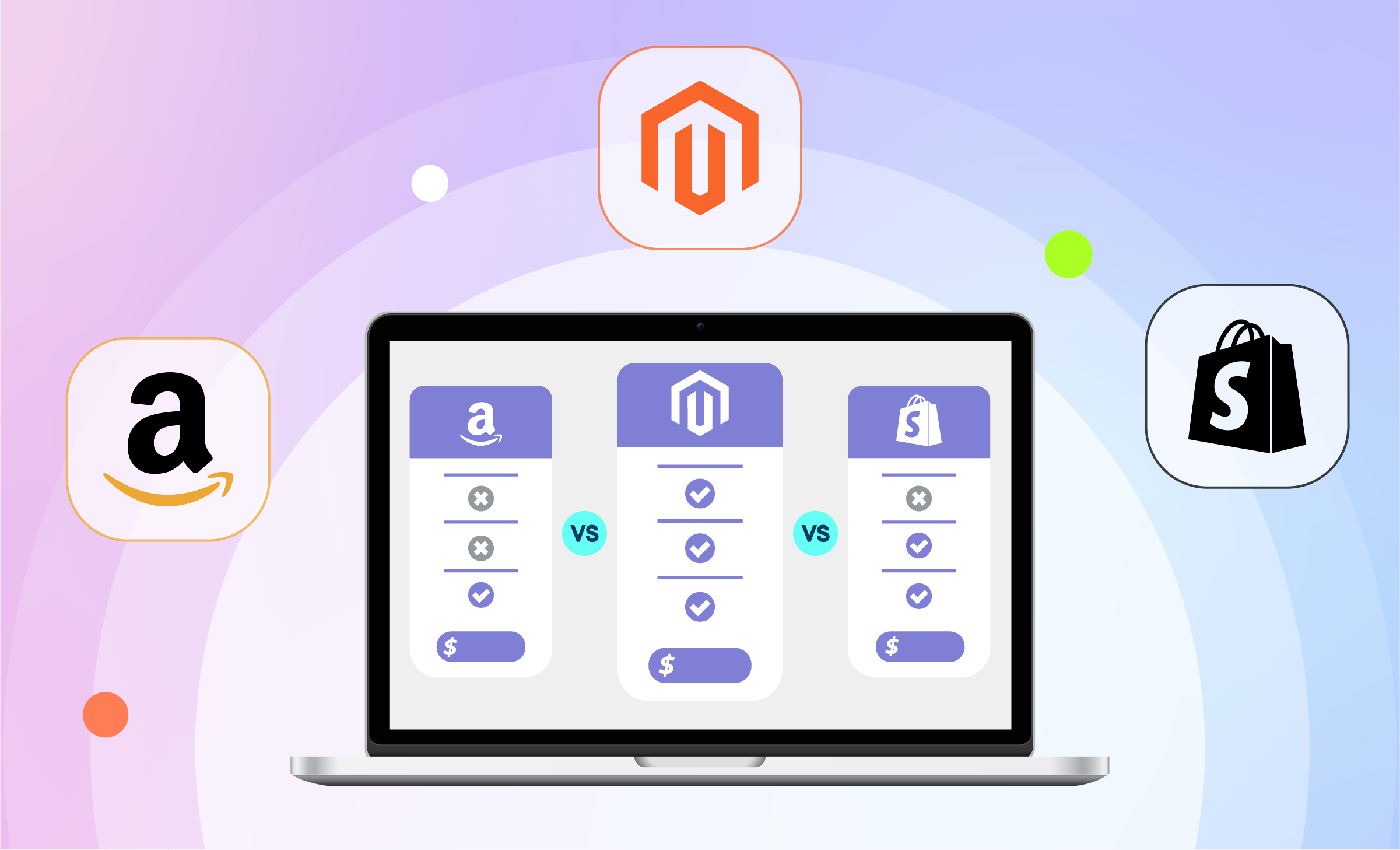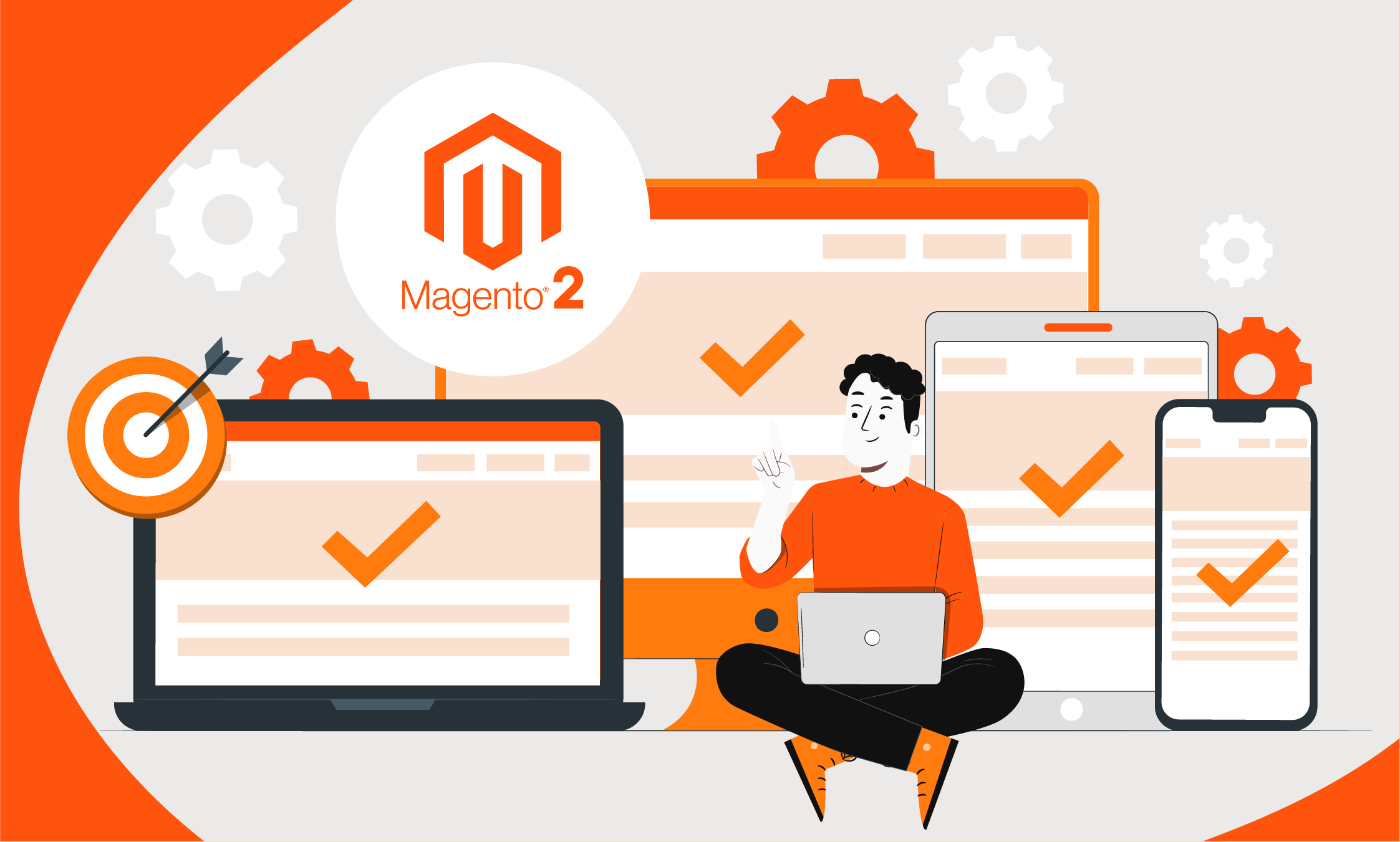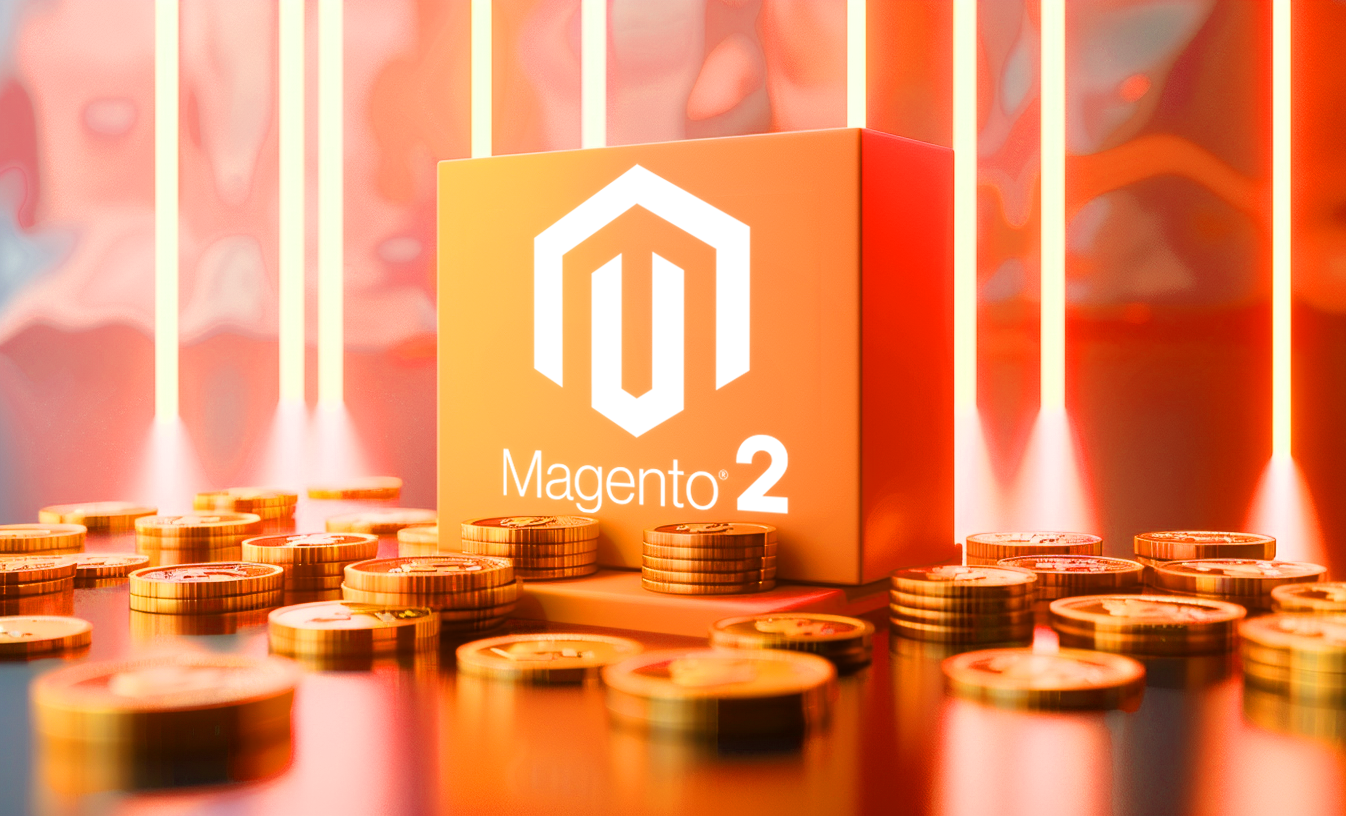Magento 1 earned its reputation as one of the most powerful open-source eCommerce platforms of its time. It gave merchants the freedom to build highly customized storefronts and scale ambitious strategies.
Yet as of today—almost 10 years since the release of Magento 2!—an estimated 58% of active websites still ran on Magento 1 according to data from BuiltWith. In total, Magento powers close to 2% of the top 1M websites, reflecting both its continued relevance and the gradual shift toward more modern solutions. So why have so many brands waited?
From Migration to Custom Development and Optimization, TMO has over 10+ years of experience offering Adobe Commerce (Magento) Services to help you make the most out of your eCommerce operation.
Part of the hesitation comes from the assumption that Magento 2 is just a version update. In reality, it represents a fundamental architectural overhaul. Magento 2 (and its Adobe Commerce implementation) introduces major improvements in performance, scalability, and global readiness.
If you’re still on Magento 1, you may not be experiencing obvious issues, or you might be evaluating whether the improvements in Magento 2 are significant enough to justify a rebuild. That’s the question we’ll help you answer.
In this article, we’ll break down what’s changed since Magento 1, explore the technical and operational advantages of Magento 2, and help you assess whether now is the right time to modernize your stack—particularly if global expansion is on your roadmap.
Why Magento 1 Isn't Built for Today's eCommerce
Magento 1 was a significant player in the early days of eCommerce, offering merchants extensive customization and control over their online stores. However, as the digital commerce landscape has evolved, some of the platform's limitations have become more apparent.
Unsure what's holding you back? An Operational and Technical Audit for Magento 1 can help you uncover eCommerce performance, SEO, and security issues.
Key Limitations of Magento 1:
- End of Official Support: Adobe officially ended support for Magento 1 in June 2020. This means no more security patches or updates, increasing vulnerability to security threats. Magento 2 still gets periodical releases and, except for Open Source, its Enterprise and Enterprise Cloud also come with Adobe’s official customer support.
- Outdated Technology Stack: Magento 1 lacks support for modern technologies like PHP 8+, Varnish caching, and responsive design frameworks, which are essential for optimal performance and user experience.
- Limited Mobile Optimization: With the increasing importance of mobile commerce, Magento 1's limited mobile responsiveness can hinder user engagement and conversion rates.
- Compliance Challenges in Specific Markets: For businesses aiming to expand into markets like China, Magento 1 poses challenges in meeting local compliance requirements, such as Payment Card Industry Data Security Standards (PCI), integration with regional payment gateways, and personal data protection laws.
In summary, while Magento 1 served its purpose during its time, the evolving demands of eCommerce necessitate platforms that offer enhanced security, performance, and compliance capabilities. Businesses aiming for growth and scalability should consider transitioning to more modern solutions like Magento 2 or Adobe Commerce.
What's Improved in Magento 2 (and Adobe Commerce)
Magento 2 is not simply a continuation of Magento 1 but a complete architectural overhaul designed to meet the demands of modern eCommerce. Adobe has continued to expand its capabilities through Adobe Commerce, adding enterprise-level features and integrations that align with business scalability, performance, and regional expansion needs. Below are some of the most relevant improvements:
Core Platform Enhancements
- Modern Architecture: Built with a modular framework and service contracts, Magento 2 improves code maintainability, reduces conflicts between extensions, and simplifies integration with third-party systems.
- Performance Optimization: Native support for full-page caching with Varnish, faster TTFB (Time to First Byte), and improved indexing contribute to significantly better performance out of the box.
- Streamlined Checkout: Magento 2 features a faster, two-step checkout process that reduces cart abandonment compared to Magento 1’s multi-page flow.
- Mobile Responsiveness: Base themes are fully responsive, with performance improvements targeted at mobile users—a key requirement for markets across Asia on which many of our clients focus.
- Database Management Improvements: Magento 2 handles larger catalogs and higher order volumes more efficiently, with support for catalogs far exceeding 100,000 products thanks to improved indexing, caching, and database structure. This becomes particulary important as your store growths or you scale overseas.
Support for Modern Technologies
Magento 2 is built to support today’s evolving tech ecosystem. This includes compatibility with advanced architectures and deployment strategies that weren’t available (or feasible) when Magento 1 was released. Key capabilities include:
- Progressive Web App (PWA) Support: Magento 2 (via PWA Studio) enables brands to deploy app-like storefronts that load instantly, work offline, and provide a smoother mobile experience. This is especially valuable in mobile-first or bandwidth-constrained markets, where performance directly impacts conversion.
- Headless & API-First Architecture: Magento 2 is far more extensible via APIs, making it suitable for headless builds, composable commerce frameworks, or integration with third-party frontends, native apps, or content platforms.
- Modern DevOps Compatibility: Containerized deployment, automated CI/CD pipelines, and scalable hosting options make Magento 2 more future-ready from an infrastructure standpoint.
- Better Extension & Tooling Ecosystem: Magento 2’s architecture is more compatible with current extension standards and vendor support. Magento 1 modules are increasingly deprecated, while the Magento 2 marketplace continues to grow.
- Fewer Extension Conflicts via Plugin System: Unlike Magento 1, where extensions often conflict due to class rewrites, Magento 2 uses a plugin-based system that allows multiple modules to safely modify the same functionality. This reduces technical debt and makes it easier to scale or update features over time.
These improvements aren’t just technical upgrades. They enable teams to adapt faster, launch in new markets more efficiently, and provide better UX without rebuilding from scratch every time the business evolves.
Business Operations & Experience
- Improved Admin Interface: The backend was redesigned to be more intuitive for non-technical users. Features like grid customization and visual merchandising tools reduce marketing and operations bottlenecks.
- Content Management: Adobe Page Builder (available in Adobe Commerce) allows drag-and-drop content creation, enabling faster campaign execution without needing developer support.
- B2B Suite (Adobe Commerce):
- Company accounts and user roles
- Custom pricing and catalogs
- Request-for-quote functionality
- Purchase approval workflows
These features reduce reliance on third-party modules and provide native support for complex selling models.
Global Deployment & Expansion
- Multi-Store, Multi-Language, Multi-Currency: Built-in support for region-specific storefronts under a single instance enables cost-effective market expansion.
- Cloud & On-Premise Options: Magento 2 supports both Adobe Commerce Cloud and on-premise deployments. For regions like China, on-premise is often required due to data compliance and performance regulations.
- Infrastructure Flexibility: Magento 2 offers better compatibility with edge CDN services, caching layers, and modern DevOps workflows — all critical for delivering consistent performance across SEA and China.
Magento 2 is positioned as a long-term solution for scaling digital operations. While Magento 1 provided flexibility, Magento 2 provides both flexibility and a modern foundation for speed, automation, and global growth.
How Magento 2 Delivers Better Speed & Performance
As noted in the previous section, Magento 2 introduces several platform-level upgrades, from modular code and improved caching to modern indexing and PHP 7+ and HTML5 compatibility that collectively contribute to better performance straight out of the box. These aren't theoretical benefits: they translate into real speed gains across common storefront interactions.
To understand the scale of this improvement, we can look at a comparative performance test conducted by Amasty, a leading Magento extension developer. Their analysis measured the same storefront actions across Magento 1 and Magento 2 environments, using equivalent infrastructure to isolate platform differences. Some of the key findings from this study are reflected in the table below:
| Metric | Magento 1 | Magento 2 | Performance Gain |
|---|---|---|---|
| Homepage Load Time | 1.5 – 1.8 sec | 1.0 – 1.2 sec | ~33% faster |
| Category Page Load Time | 1.6 – 1.9 sec | 1.1 – 1.3 sec | ~30% faster |
| Product Page Load Time | 1.8 – 2.1 sec | 1.2 – 1.4 sec | ~30% faster |
| Add to Cart Response | 600 – 800 ms | 300 – 400 ms | ~50% faster |
| Search Response | 1.0 – 1.2 sec | 700 – 900 ms | ~25% faster |
These are just a few measurable examples of how Magento 2 improves performance over Magento 1. Gains can also be seen in other areas like catalog search response, filter application, pagination, and sorting, all of which contribute to smoother browsing experiences and faster conversion paths, especially on large or complex catalogs.
Operational Warning Signs It's Time to Rebuild
For many brands still running on Magento 1 or even early Magento 2 builds, it’s not always immediately clear when the platform has become a barrier to growth. If the site is technically online and orders are still coming in, there may not appear to be urgency. However, the operational strain often builds gradually. Below are common indicators that your current Magento build may be limiting progress:
We previously wrote about the What is the True Cost of Migrating from Magento 1 to Magento 2?From data migration to licenses and other costs, we broke down the costs involved in a Magento 1 to Magento 2 migration project.Cost Breakdown of a Magento Migration project.
Development & Maintenance Bottlenecks
- Routine updates take longer than expected or introduce breakage
- Integrating new tools (e.g., CRM, analytics, payment gateways) requires excessive custom development
- Developer time is increasingly spent on patching or workarounds, not innovation
Performance & Conversion Limitations
- Mobile load speed lags behind industry benchmarks
- Checkout customizations are limited by technical constraints or legacy architecture
- You’ve hit a ceiling optimizing page speed or conversion rate, despite frontend work
Scalability & Expansion Constraints
- Launching new storefronts for additional regions is too resource-intensive
- Difficulties managing pricing, content, or promotions across multiple markets or business units
- International campaigns are slowed down by compliance, hosting, or infrastructure mismatches
Technical Debt & Security Risk
- Many widely used extensions and modules are no longer actively maintained for Magento 1, which limits your ability to keep up with new requirements or fixes
- Payment gateways are increasingly dropping support or changing their APIs, requiring custom development or unofficial workarounds to stay operational
- Security patches are applied manually or rely on unofficial third-party support and high costs for custom patching.
- Bugs are harder to diagnose due to legacy customizations and poor documentation
While these issues can often be addressed individually, over time they add up, leading to higher maintenance costs, slower time-to-market, and missed growth opportunities. At that point, it may be more efficient and strategic to rebuild than to continue patching a foundation that no longer supports your goals.
What a Rebuild Enables Beyond Speed
Rebuilding your eCommerce platform isn’t just about fixing what’s broken but realigning your technology with your business objectives. For many brands, a modern Magento 2 or Adobe Commerce implementation becomes the foundation for scaling into new markets, supporting new teams, or improving internal efficiency. Here’s what a rebuild can enable:
Faster Marketing & Operational Execution
- Visual content tools (like Page Builder) allow non-developers to launch landing pages and campaigns independently
- Native support for product staging and scheduling reduces manual work and improves promotional agility
- Integrated customer segmentation and personalization support more targeted user journeys
Easier Integration with Modern Systems
- Magento 2’s modular architecture is designed for easier connection to ERP, CRM, PIM, OMS, and analytics tools
- API support and service contracts improve system reliability and reduce development time
- Adobe Commerce offers stronger compatibility with enterprise marketing and reporting stacks
Multi-Market and B2B Scalability
- Native support for multiple storefronts, currencies, tax rules, and languages from one admin
- Advanced B2B features support sales teams, account-based pricing, and quote workflows
- On-premise deployment makes it possible to meet region-specific infrastructure needs, including for China
Future-Proof Architecture
- Headless-friendly structure for PWA, mobile app, or composable commerce strategies
Support for edge caching, flexible deployment pipelines, and cloud-readiness - Ongoing roadmap investment from Adobe ensures long-term stability and support
Assess your Current Magento 1 Build with TMO
For brands looking to scale across borders, improve agility, or reduce long-term maintenance strain, a rebuild is an opportunity to reset the foundation with growth in mind. Magento 1 served many brands well during its time. But today, continuing to operate on an outdated can quietly limit growth, increase maintenance overhead, and reduce your ability to respond to market opportunities.
Check out TMO’s Customer Portfolio for successful Magento & Adobe Commerce implementations, system upgrades, and optimization.
If you’re finding that performance has plateaued, integrations are getting harder, or international growth feels blocked by your current platform, now may be the right time to evaluate a rebuild. Not because something is broken, but because something better is possible. Technical, operational, and SEO audits can help you evaluate where you are now, and what’s possible with a rebuild aligned to your business goals. Reach out to us to discuss how we can help diagnose and optimize your current eCommerce implementation.












